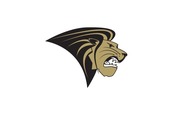Introduction to Art: Design, Context, and Meaning
(View Complete Item Description)Introduction to Art: Design, Context, and Meaning offers a comprehensive introduction to the world of Art. Authored by four USG faculty members with advance degrees in the arts, this textbooks offers up-to-date original scholarship. It includes over 400 high-quality images illustrating the history of art, its technical applications, and its many uses. Combining the best elements of both a traditional textbook and a reader, it introduces such issues in art as its meaning and purpose; its meaning and purpose; its structure, material, and form; and its diverse effects on our lives. Its digital nature allows students to follow links to applicable sources and videos, expanding the students’ educational experiences beyond the textbook. Introduction to Art: Design, Context, and Meaning provides a new and free alternative to traditional textbooks, making it an invaluable resource in our modern age of technology and advancement.
Material Type: Textbook




















